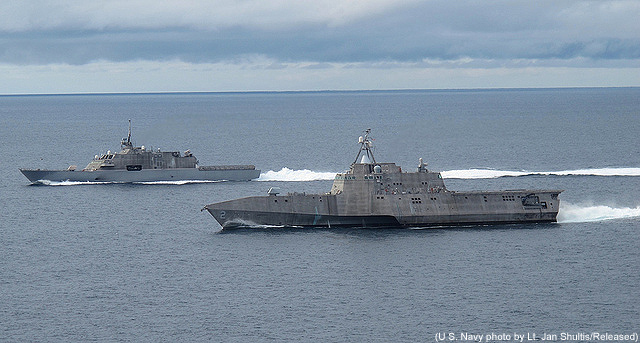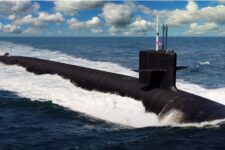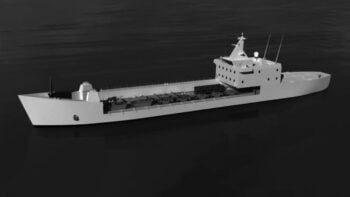 WASHINGTON: The Navy wants its ships, submarines, drones, and on-shore intelligence analysts to be able to share data in real time, across domains — without fail. The problem, the admiral leading the charge says, is that kind of digital architecture costs money, and takes time, and both are in short supply.
WASHINGTON: The Navy wants its ships, submarines, drones, and on-shore intelligence analysts to be able to share data in real time, across domains — without fail. The problem, the admiral leading the charge says, is that kind of digital architecture costs money, and takes time, and both are in short supply.
“We deserve better information to the decision-maker,” the Navy’s director of surface warfare, Rear Adm. Gene Black, told the American Society of Naval Engineers’ conference Thursday. “The information is there, somewhere. We’re just not getting it in the right hands at the right speed.”
Right now, there is just no way for Navy commanders to share information to orchestrate true Multi-Domain Operations, an outcome that top military leaders throughout the Pentagon and across the world are struggling to understand and achieve. “It’s every ship, it’s every radar, it’s every airplane, it’s every weapon,” Black said. If they’re all not networked together, the Navy risks being taken by surprise and defeated in future conflicts with a peer force that can bring advanced, precision weapons to bear against American hulls.
The issue won’t be resolved in the forthcoming Force Structure Assessment that Chief of Naval Operations Adm. Mike Gilday is wrapping up. That plan will offer guidance on the size and makeup of the future fleet — service officials have said 355 ships is looking less likely — with a big effort to integrate and deploy lots of unmanned surface vessels and drones.
Those unmanned assets will likely be pushed out ahead of carrier strike groups, acting as a screen to protect the carriers and other manned ships which will be forced to operate at a distance to avoid stealthy submarines and long-range missiles and hypersonic weapons. But to act as the eyes and ears of the fleet, those drones will need to be part of the network, and distributed to as many analysts and ship’s crews as possible in order to be effective.
“We have to have the ability for that operator, when he looks at that track, to have confidence, whether it’s coming from an unmanned vehicle 200 miles away, that it’s the same thing they’re seeing on a cruiser,” Black said. That data needs to be readily available across the network so when he tells commander that he wants certain targets hit, or others to be left alone, everyone involved from the top of the command chain to the bottom understands what is happening, and what may or may not be a threat.
Black is working alongside several Navy offices to make this vision a reality, but it is early days yet.
The plan to integrate all of the Navy’s assets under, on and above the waves will cost money, and must fight for attention with other urgent priorities like the Columbia-class submarine, fixing issues with the Ford-class carrier, modernizing the Virginia-class subs, and building a new frigates. The Congressional Budget Office has already estimated that the Navy’s 30 year shipbuilding plan is about $200 billion too low, and Adm. Gilday and Marine Commandant David Berger are wrapping up their look at how to more closely integrate the Navy and Marines to operate more effectively.
That plan, which will likely call for Marine units on the ground to support deployed ships with long-range precision fires and Marine F-35Bs, will also cost money, placing the squeeze on any other new plans.
Director for Warfare Integration Rear Adm. Dan Fillion, also speaking at the conference, said things must change. “We are going to do things differently, we are going to do things in a completely netted environment,” in the future, he said. But first the Navy needs a plan.






















